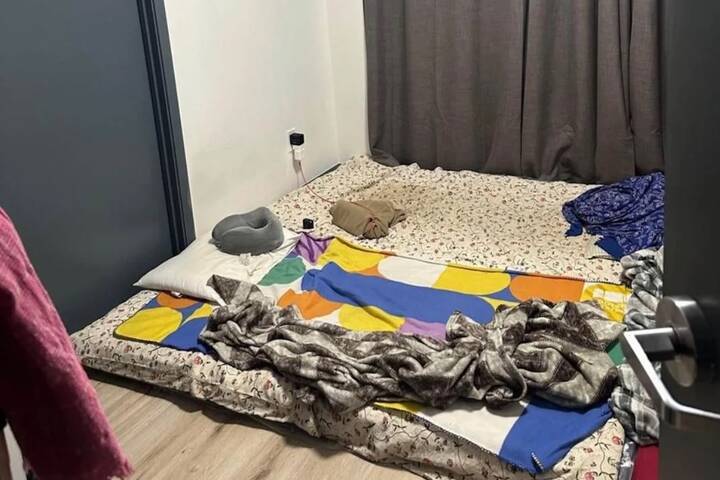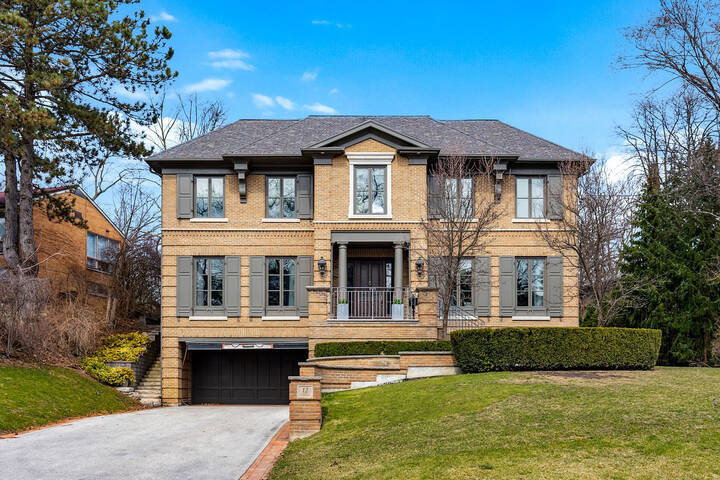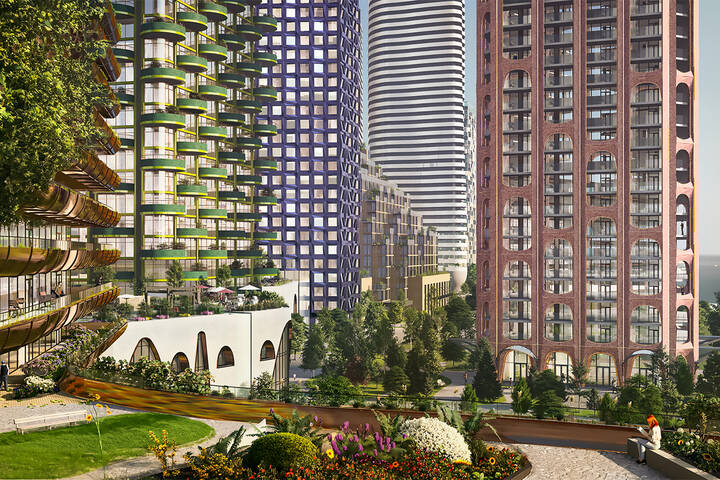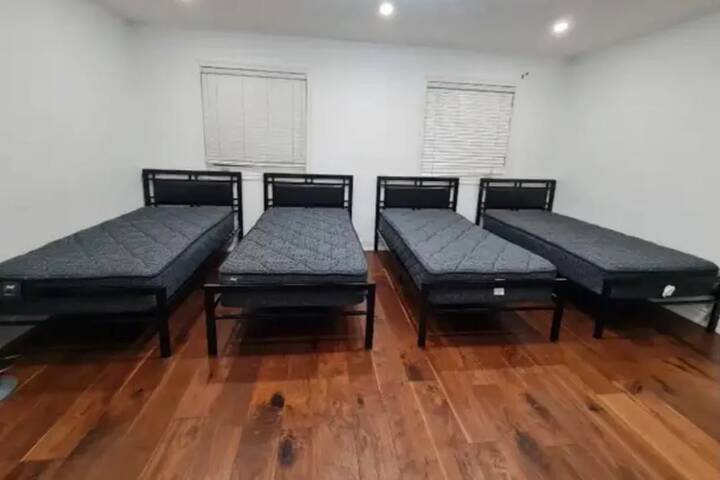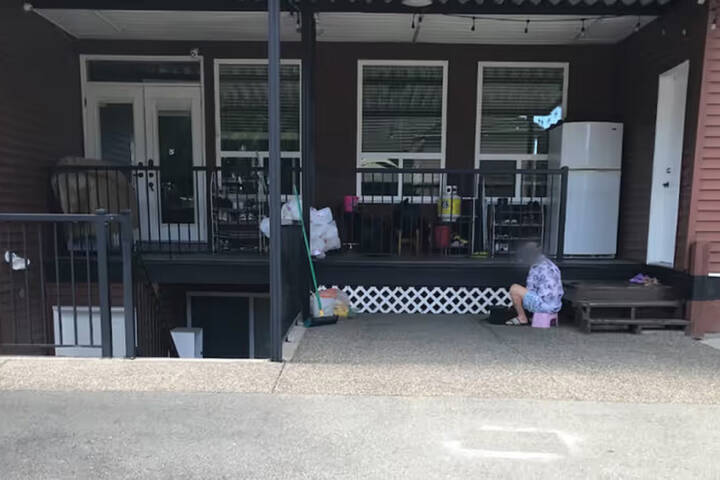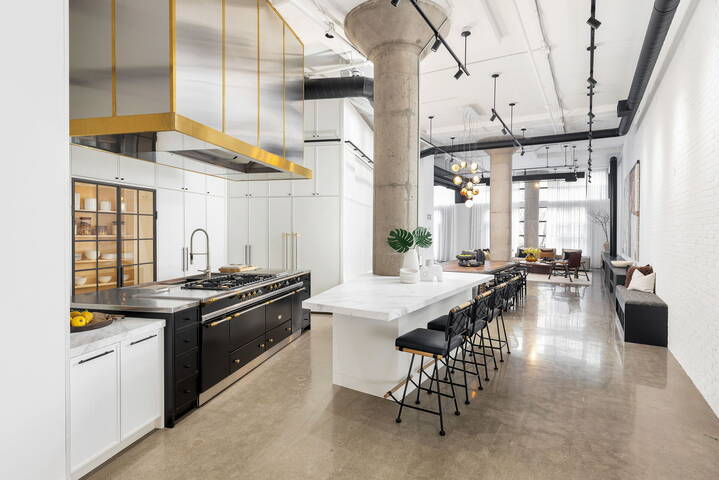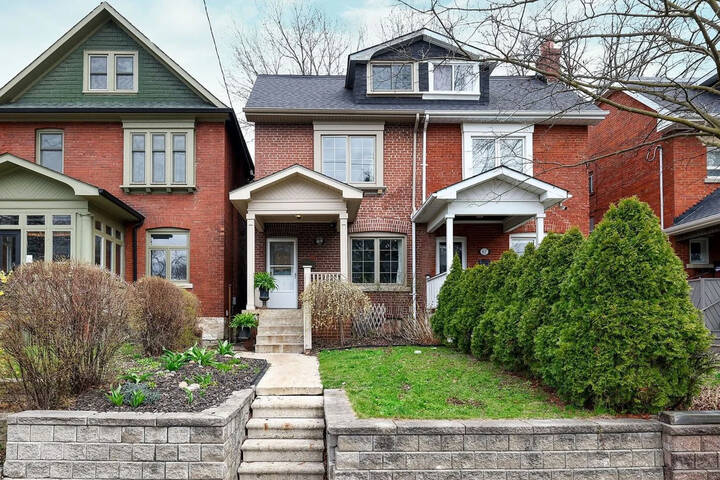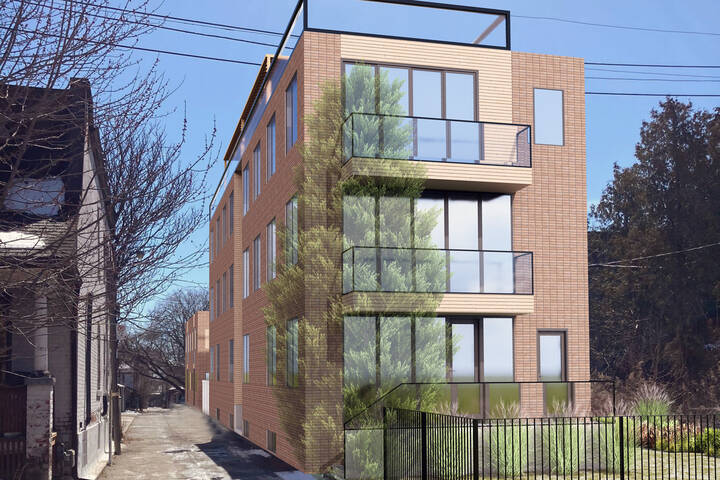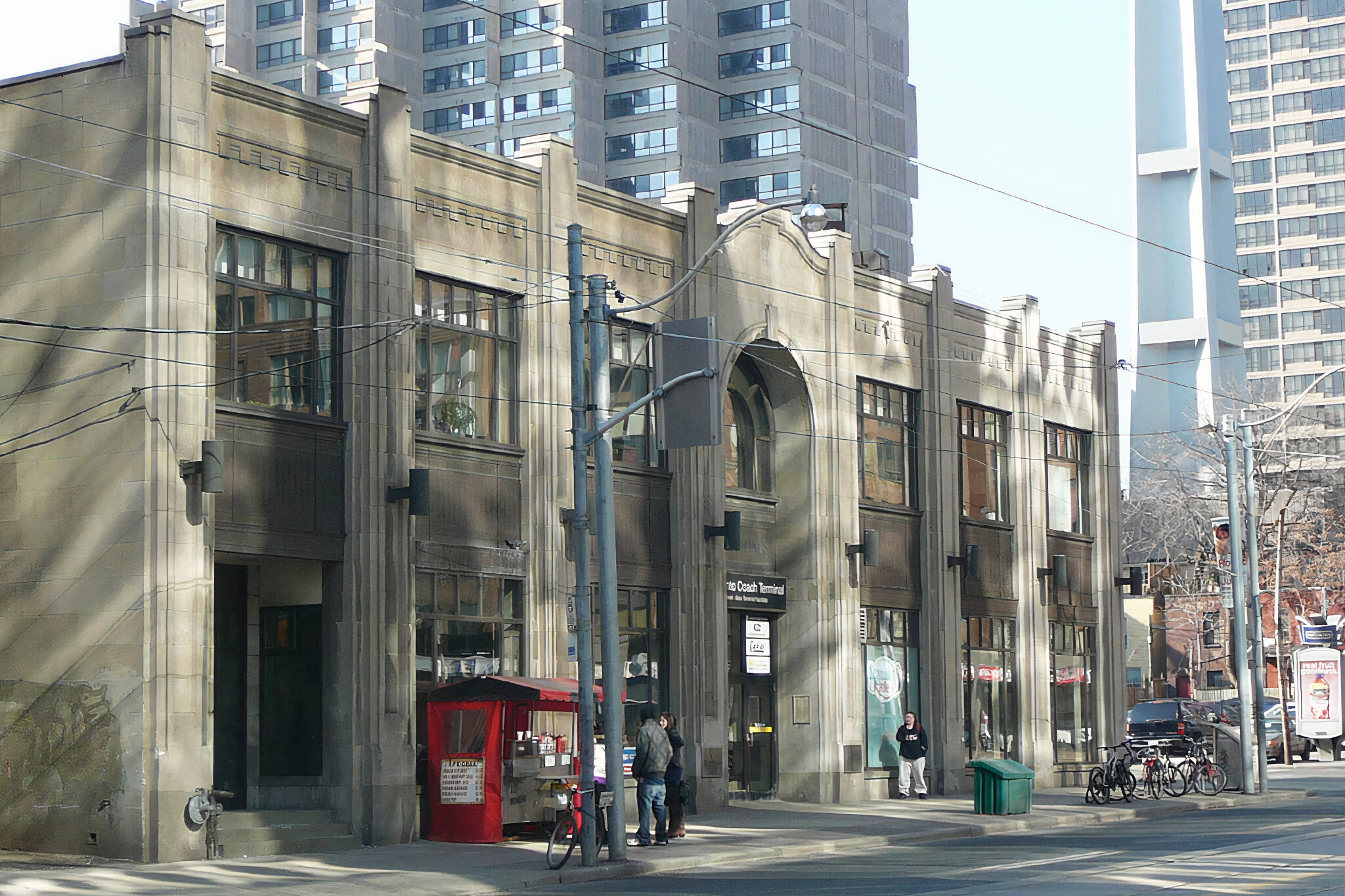
Here are Toronto's plans for the coach terminal and 7 more city-owned properties it's unlocking
The City of Toronto has just revealed some big plans to completely revamp eight chunks of downtown land — including a few iconic historic buildings — that it owns and will "unlock" for all-new uses in the coming years.
Among the sites are the recently-defunct, 91-year-old coach bus terminal at Bay and Dundas, the William McBrien Building at Yonge and Davisville (which houses the TTC headquarters), and a low-rise building of the same post-war concrete modernist style of City Hall, nestled just behind it.
Also on the list are 33 Queen St. E, 931 Yonge St., 277 Victoria St., 95 The Esplanade and 18 Dyas Road, which are currently occupied by Green P, Toronto Community Housing, and various City of Toronto Services.
The ambitious reimagining of the parcels of land — which altogether add up to a whopping $450 million in real estate value — are part of ModernTO, a program that aims to upgrade and better optimize city-held office spaces, which amount in total to more than three million square feet across 55 locations, whether leased or owned outright.
1/ Today's @_CreateTO Board meeting is underway - starting with an update on #ModernTO program in #TOPoli.
— HousingNowTO (@HousingNowTO) March 7, 2022
PDF - https://t.co/2VwqzXpeJE pic.twitter.com/dzAixD0cRv
The project, helmed by CreateTO approved by council back in January 2020, notes that such spaces are outdated and inefficiently used, and suggests that the City streamline them down to just 15, selling the rest off.
The aforementioned eight buildings are the first that will be transformed to better address city needs, such as creating more affordable housing, public realm improvements, and other opportunities, with the ModernTO team releasing its latest update on Monday.
Moving forward, there will be a slew of consultation with the public to decide what the final details of the plans for each will be, with some of the land slated for major redevelopment, and some for less drastic tweaks.
At present, it is recommended that the landmark bus terminal be razed for a high-rise tower that will offer market condo, rental and affordable housing units, as well as a paramedic "multi-hub," office space and more.
Given the heritage nature of 610 Bay, its Art Deco exterior, at least, will likely be incorporated into the design.
For 277 Victoria, the plan is another mixed-use development that will be mostly institutional in nature, with some retail and community space on the two lower levels.
The building at Yonge and Rosedale Valley will likewise become a "mixed-income, mixed-use, high-rise development to include affordable ownership housing," though it will be on a smaller scale than the others, given the existing neighbourhood density and adjacent green spaces.
3/ ...old Coach Terminal (610 Bay Street & 130 Elizabeth Street) is on the redevelopment fast-track via #ModernTO at @_CreateTO.
— HousingNowTO (@HousingNowTO) March 7, 2022
Public consultations, and Request for Expression of Interest (REOI) be issued to both the development and not-for-profit community in 2022...#TOPoli pic.twitter.com/4Vjimgz74c
As for the additional lots, there are solid recommendationsyetaside from some minor repurposing of the spaces for different city uses: 18 Dyas will be adapted to hold a paramedics multi-function station hub, while 95 The Esplanade will get a facelift to include entrepreneur and incubator spaces, with the potential for sale of the building in the future.
Though a lot of work has gone into the project up to this point, it's apparent that there is still a lot more to go before we see what the final iterations of each property will be, and what benefits they will bring to the public and to city operations.
Latest Videos
Latest Videos
Join the conversation Load comments
